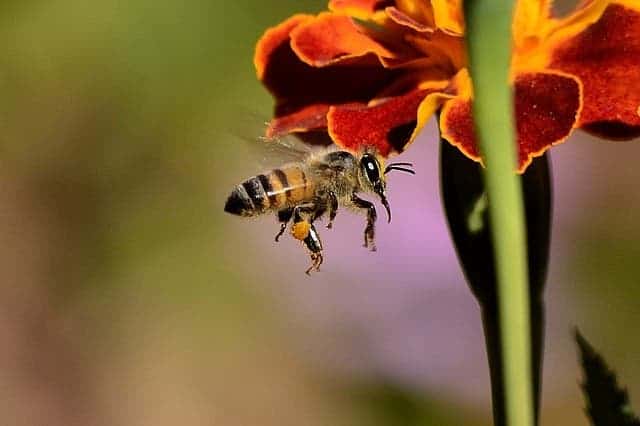
Bees have a very keen sense of smell — they need it in order to survive. Even thousands of feet from their original source, a bee can detect the odor molecules emitted by the various plants which it pollinates. But air pollution acts as a retardant, shortening the life span and travel distance of these odor molecules. As a result, bees become confused and now require more time to forage, a new study found.
“Many insects have nests that are up to 3,000 feet away from their food source, which means that scents need to travel long distances before insects can detect them,” said Jose D. Fuentes, professor of meteorology and atmospheric science, Penn State.
“Each insect has a detection threshold for certain kinds of scents and they find food by moving from areas of low concentrations of scents to areas of high concentrations.”
It’s common knowledge that plant emit volatile hydrocarbons in the atmosphere — these molecules create their pleasant smell. These chemicals interact with certain air pollutants like car exhaust sourced ozone — a chemical reaction which breaks down the plant odors. Moreover, this process leads to the creation of more pollutants like hydroxyl and nitrate radicals which amplify the feedback loop.
Penn State researchers sought to fully understand the chemical mechanisms involved in this interaction. Using a computer simulation, they first plotted changes in the concentration of flower odors as a result of air turbulence and chemical interactions. This model enabled a theoretical footing to track the scents’ concentrations and movements emitted by different flowers over time.
Some 90,000 simulations were run, in which bees’ foraging patterns were influenced by various scent levels, air pollution concentration and wind speed (a diluter).
As air pollution increases, scent lifetime and travel distance decrease in an inverse relationship. For instance, 60 parts per billion in ozone levels — the EPA’s threshold for “moderate” ozone pollution — was enough to confuse bees and hinder their ability to identify food. One scent molecule called alpha-pinene can survive up to 40 hours in an ozone free environment, but at 60 parts per billion (ppb) it only lasts ten hours. For 120 ppb, the dissipation time is only one hour.
The impact on the time it takes bees to forage was significant. It took 20 percent of bees ten minutes to sense the beta-caryophyllene odor in an ozone-free environment, but this timeframe quickly escalated to 180 minutes for only 20 ppb ozone.
We found that when we confused the bees’ environment by modifying the gases present in the atmosphere, they spent more time foraging and would bring back less food, which would affect their colonies,” said Fuentes. “It’s similar to being asked to get a cup of coffee at the nearest cafeteria while you are blindfolded. It will be hard to locate the coffee shop without using visual cues. The same could happen to insect pollinators while foraging for food in polluted air masses.”
The findings bear a lot of significance for an already seriously threatened animal. The U.S. lost 42.1 percent of its bee colonies in just one year, between April 2014 and April 2015, owing to the dreaded colony collapse disorder, which is thought to be triggered by pesticide use.
“Honeybees and other pollinators are in trouble almost everywhere, and they pay us a lot of services through their pollination,” said Fuentes. “The more we can understand about what factors are affecting their decline in numbers, the more equipped we will be to intervene if needed.”






